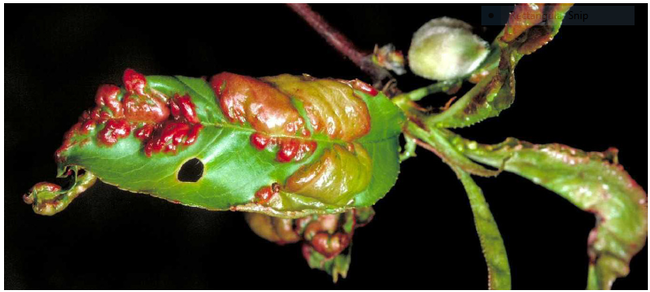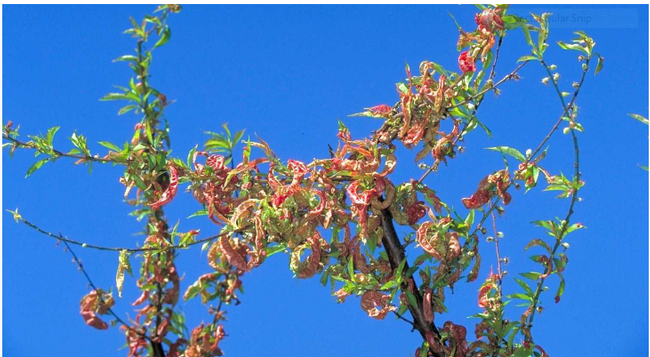Advice From the Help Desk of the UC Master Gardeners of Contra Costa County
Client's Question: Last spring when my peach tree leafed out the leaves were all funny shaped. Can you tell me what the problem is and how to prevent it from happening again?
Photo: Jack Clark Kelly, UC Statewide IPM Project.
Symptoms Appear in Spring:Peach leaf curl first appears in spring as reddish areas on developing leaves. These areas become thickened and puckered, causing leaves to curl and severely distort. Later, affected leaves turn yellow or brown and can remain on the tree or may fall off. They are usually replaced by a second set of leaves that develop normally unless wet weather continues. The loss of leaves and producing new leaves results in decreased growth and fruit production and may expose branches to sunburn.
Photo: Jack Clark Kelly, UC Statewide IPM Project. ©UC Regents.
Peach Leaf Curl Prevention: Preventing peach leaf curl is relatively easy. You must spray peach and nectarine trees with a fungicide during the dormant season every year after leaves have fallen. A single early treatment when the tree is dormant is generally effective. However, with a particularly wet winter or spring, it may be advisable to apply a second spray late in the dormant season, preferably as flower buds begin to swell, but before green leaf tips are first visible.
Types of Preventives:The most commonly used, safest, and effective fungicides available to home owners are “fixed copper products”, but there are other products available as described in the University of California publication on controlling peach leaf curl. This free publication is available on the web at: http://www.ipm.ucdavis.edu/PMG/PESTNOTES/pn7426.html.
Thorough coverage by the spray is the key. In any case, if leaf curl symptoms occurred on your trees last spring, be sure to treat now to prevent more serious losses the following year.
For More Information:You can find more information on growing peaches on UC's Home Orchard web site at: http://homeorchard.ucanr.edu/Fruits_&_Nuts/Peach/
Editor's Note: This is an updated version of an article originally written by MGCC and published in the Contra Costa Times December 4, 2010.
Help Desk of the UC Master Gardeners of Contra Costa County
Note: The UC Master Gardeners of Contra Costa's Help Desk is available year-round to answer your gardening questions. Except for a few holidays, we're open every week, Monday through Thursday for walk-ins from 9:00 am to Noon at 75 Santa Barbara Road, 2d Floor, Pleasant Hill, CA 94523. We can also be reached via telephone: (925) 646-6586, email: ccmg@ucanr.edu, or on the web at http://ccmg.ucanr.edu/Ask_Us/ MGCC Blogs can be found at http://ccmg.ucanr.edu/HortCoCo/ You can also subscribe to the Blog (//ucanr.edu/blogs/blogcore/blogroll.cfm).